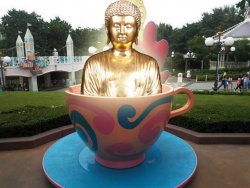Hinayana and Theravada
Hinayana and Theravada; Concerning the distinctions between Hinayana and Theravada, Dr. Rahula, a prominent buddhist teacher, says the following:
"Between the 1st Century B.C. to the 1st Century A.D., the two terms Mahayana and Hinayana appeared in the Saddharma Pundarika Sutra or the Sutra of the Lotus of the Good Law.
About the 2nd Century A.D. Mahayana became clearly defined. Nagarjuna developed the Mahayana philosophy of Sunyata and proved that everything is Void in a small text called Madhyamika-karika. About the 4th Century, there were Asanga and Vasubandhu who wrote enormous amount of works on Mahayana. After the 1st Century AD., the Mahayanists took a definite stand and only then the terms of Mahayana and Hinayana were introduced.
We must not confuse Hinayana with Theravada because the terms are not synonymous. Theravada Buddhism went to Sri Lanka during the 3rd Century B.C. when there was no Mahayana at all. Hinayana sects developed in India and had an existence independent from the form of Buddhism existing in Sri Lanka. Today there is no Hinayana sect in existence anywhere in the world. Therefore, in 1950 the World Fellowship of Buddhists inaugurated in Colombo unanimously decided that the term Hinayana should be dropped when referring to Buddhism existing today in Sri Lanka, Thailand, Burma, Cambodia, Laos, etc. This is the brief history of Theravada, Mahayana and Hinayana." -Dr. Rahula, Gems of Buddhist Wisdom
